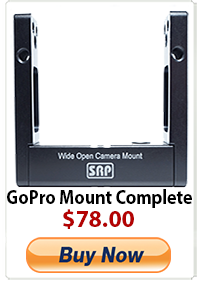Zeiss CP.2 Lens Mount Change From PL To Canon EF.
Scott Selenak from Birns & Sawyer, Hollywood shows how to quickly change a Zeiss CP.2 lens mount from PL to Canon EF. It’s as easy as removing a few torx screws with the supplied torx driver and checking the back focus with either a camera or a collimator. The entire process only takes a few minutes. We do not recommend trying this in the field unless you have a clean working environment. The camera truck may be just fine. Dig it.
-
http://twitter.com/ChrisMarino_DP Christopher Marino
-
http://cinemajestic.livejournal.com/ Cinemajestic
-
Goforjared
-
http://cinemajestic.livejournal.com/ Cinemajestic
-
Buttbongo
-
Scott @ Birns & Sawyer
-
http://twitter.com/goforjared jared abrams
-
http://twitter.com/goforjared jared abrams
-
http://cinemajestic.livejournal.com/ Cinemajestic
-
Scott @ Birns & Sawyer
-
http://cinemajestic.livejournal.com/ Cinemajestic
-
Scott @ Birns & Sawyer
-
Scott @ Birns & Sawyer
-
S.27
-
http://pulse.yahoo.com/_H2VYGJZI7XSITCWUGMDFBCLIUU Tom Mayer
-
http://cinemajestic.livejournal.com/ cinemajestic
-
http://cinemajestic.livejournal.com/ cinemajestic
-
http://cinemajestic.livejournal.com/ cinemajestic
-
Scott @ Birns & Sawyer









